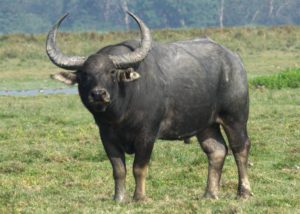Swamp Deer
●The barasingha, also called swamp deer, is a deer species distributed in the Indian subcontinent.
●Populations in northern and central India are fragmented, and two isolated populations occur in southwestern Nepal.
●It is extinct in Pakistan and Bangladesh.
●Swamp deer occur in the Kanha National Park of Madhya Pradesh, in two localities in Assam, and in only 6 localities in Uttar Pradesh.
●In India, it is included under Schedule I of the Wildlife Protection Act of 1972.
●IUCN status: Vulnerable.
SVEEP
●Systematic Voters’ Education and Electoral Participation program, better known as SVEEP
●SVEEP is the flagship program of the Election Commission of India for voter education, spreading voter awareness and promoting voter literacy in India.
●SVEEP’s primary goal is to build a truly participative democracy in India by encouraging all eligible citizens to vote and make an informed decision during the elections.
Bamboo
●Bamboos are a diverse group of evergreen perennial flowering plants in the grass family Poaceae.
●Most bamboo species are native to warm and moist tropical and to warm temperate climates.
●However, many species are found in diverse climates, ranging from hot tropical regions to cool mountainous regions and highland cloud forests.
●Bamboos seldom and unpredictably flower and the frequency of flowering varies greatly from species to species.
●Once flowering takes place, a plant declines and often dies entirely. In fact, many species only flower at intervals as long as 65 or 120 years.
●These taxa exhibit mass flowering (or gregarious flowering), with all plants in a particular ‘cohort’ flowering over a several-year period.
Asiatic Water Buffalo
●The wild water buffalo, also called Asian buffalo, Asiatic buffalo and wild Asian buffalo, is a large bovine native to the Indian subcontinent and Southeast Asia.
●It has been listed as Endangered in the IUCN Red List since 1986, as the remaining population totals less than 4,000.
●The global population has been estimated at 3,400 individuals, of which 3,100 (91%) live in India, mostly in Assam.
●The wild water buffalo occurs in India, Nepal, Bhutan, Thailand, and Cambodia, with an unconfirmed population in Myanmar.
●Its extirpated in Bangladesh, Laos,
Vietnam, and Sri Lanka.
●It is associated with wet grasslands, swamps, flood plains and densely vegetated river valleys.
●It is included in CITES Appendix III, and is legally protected in Bhutan, India, Nepal, and Thailand.

Jhuran Formation
●The discovery of iron-bearing concretions is one of the most exciting discoveries in the recent past on Mars.
●A report on analog terrestrial site hosting hematite-bearing concretions belonging to Jhuran sandstone, Kutch, India is found to be of similar type.
●The Jhuran and Martian concretions share similar textural attributes and are of comparable size, but are geochemically different.
●Both show very good similarity between the Jhuran concretions and the “Martian blueberries”.
●The Jhuran concretions are most commonly mixtures of goethite and hematite, and not pure hematite.
Article 342A
●Article 342 A empowers President to specify socially and educationally backward classes in various states and union territories.
●He can do this in consultation with Governor of concerned State. However, law enacted by Parliament will be required if list of backward classes is to be amended.
●102nd Constitution amendment Act of 2018 inserted Article 338B and 342A.
